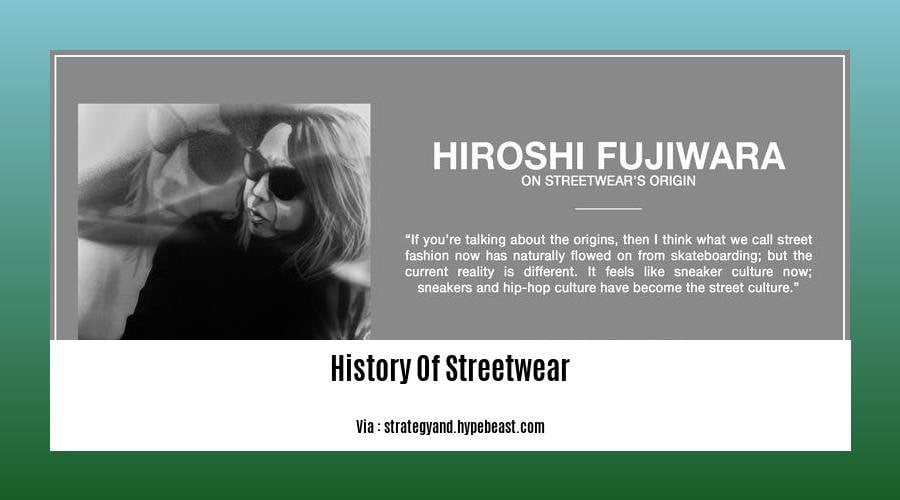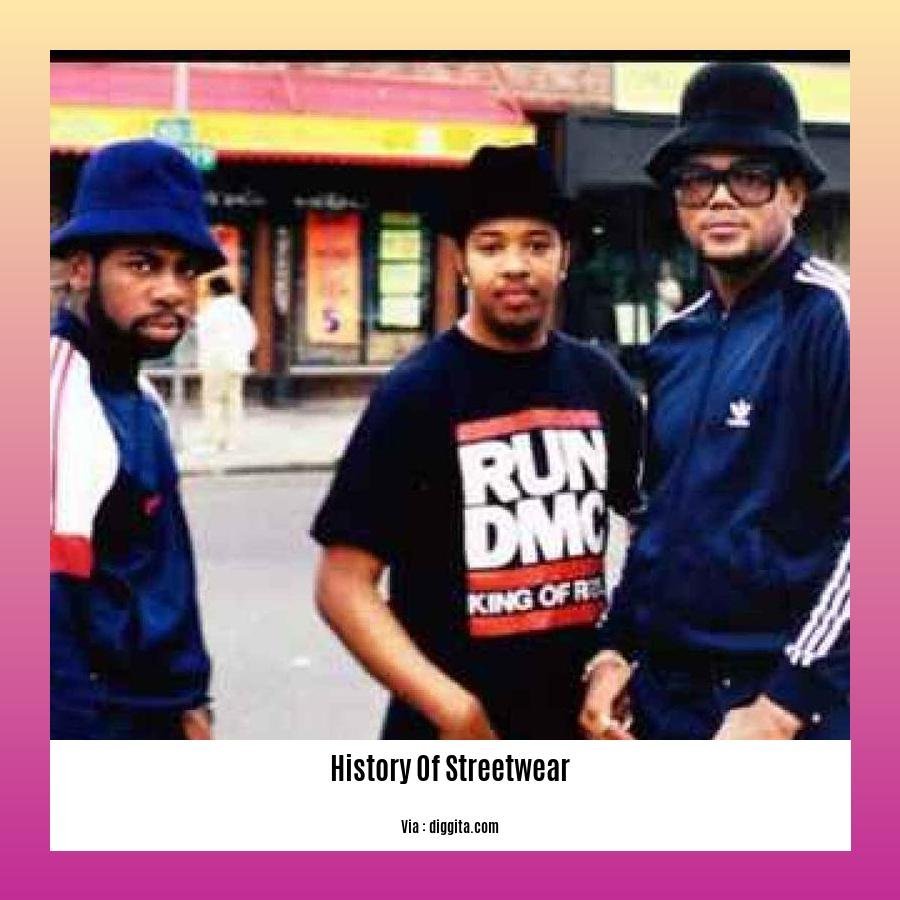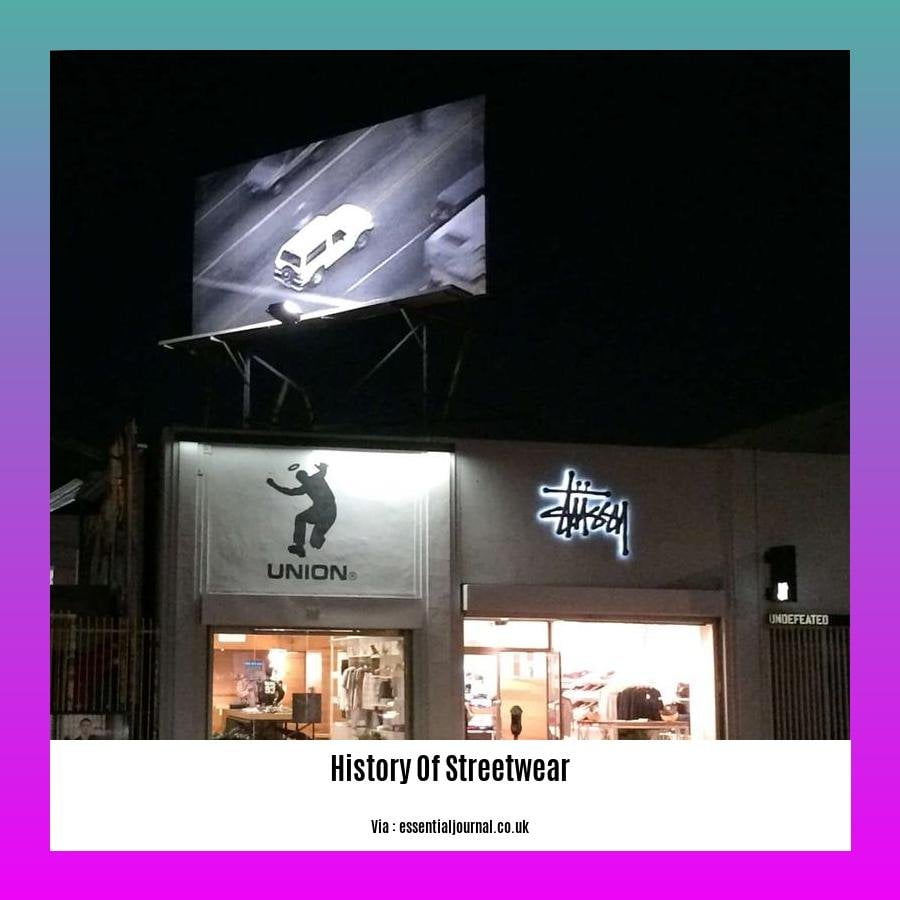From humble beginnings in the 1970s to its current status as a global phenomenon, streetwear has undergone a remarkable transformation. In this article, we delve into the rich history of streetwear, tracing its evolution from a niche subculture to a mainstream cultural force. We’ll explore the key figures, pivotal moments, and cultural influences that have shaped the landscape of streetwear, highlighting how it has become an integral part of contemporary fashion, art, and popular culture. Join us as we journey through the annals of streetwear, uncovering the stories and personalities that have propelled it to become a global cultural revolution.
Key Takeaways:
Streetwear emerged in the late 1970s, influenced by punk, hip-hop, and new wave culture.
Shawn Stussy, a surfboard maker, pioneered the movement with his iconic logo T-shirts.
Streetwear combines elements of hip-hop, skateboarding, and Japanese street fashion.
It has evolved from a niche subculture to a global fashion phenomenon.
Streetwear brands like Supreme and A Bathing Ape have gained worldwide recognition.
It has impacted the fashion industry by inspiring haute couture designers.
Streetwear is characterized by comfortable, oversized clothing with bold graphics and logos.
It represents youth culture, individuality, and a sense of community.
Streetwear collaborations with luxury brands have become common.
Its future remains bright, with continued growth and innovation expected.
History of Streetwear

In the realm of fashion, a sartorial revolution quietly germinated in the urban landscapes of the late 1970s, setting the stage for a cultural phenomenon that would redefine the very essence of clothing – streetwear was born. Rooted in the raw energy of punk and hip-hop culture, this movement transcended mere aesthetics, embodying a spirit of rebellion and individuality that would reverberate across the globe. Let’s delve into the captivating history of streetwear, tracing its evolution from humble beginnings to its current status as a global fashion powerhouse.
1970s: A Subculture Takes Form
Amidst the cacophony of punk rock concerts and the infectious beats of hip-hop, streetwear emerged as a potent form of self-expression. Inspired by the “do-it-yourself” ethos of punk and the rebellious spirit of hip-hop, early adopters of this nascent style rejected mainstream fashion norms, opting instead for comfortable, oversized clothing that defied convention.
1980s: The Dawn of Streetwear Brands
The 1980s witnessed the birth of iconic streetwear brands that would go on to shape the industry. Shawn Stussy, a surfboard maker from California, inadvertently ignited the movement when he began producing T-shirts emblazoned with his now-famous logo. Other pioneers like Futura 2000 and Hiroshi Fujiwara also emerged, leaving an indelible mark on the streetwear landscape.
1990s: Streetwear Goes Global
The 1990s marked a pivotal era for streetwear, as it transcended its niche status and exploded onto the global fashion scene. Fueled by the rise of hip-hop culture and the grunge aesthetic, streetwear became a ubiquitous symbol of youth rebellion and individuality. Brands like Supreme, A Bathing Ape, and Stüssy became household names, their logos adorning the wardrobes of fashion-forward individuals worldwide.
2000s: A New Millennium, New Trends
The new millennium brought about a wave of innovation in streetwear, as designers and brands experimented with new materials, silhouettes, and collaborations. Technical fabrics, bold graphics, and oversized fits became the order of the day, while collaborations with luxury brands like Louis Vuitton and Prada blurred the lines between high fashion and streetwear.
2010s: Streetwear Dominates the Fashion Industry
In the 2010s, streetwear reached the pinnacle of its influence, becoming a dominant force in the global fashion industry. Celebrities, athletes, and fashion icons alike embraced the trend, propelling streetwear into the mainstream. Collaborations between streetwear brands and luxury houses became increasingly common, further solidifying streetwear’s position as a cultural and economic powerhouse.
The Future of Streetwear
As we look towards the future of streetwear, it’s clear that this cultural phenomenon is here to stay. Streetwear continues to evolve, reflecting the ever-changing cultural zeitgeist while remaining true to its roots of rebellion and self-expression. From sustainable fashion initiatives to the rise of digital streetwear, the future of streetwear is brimming with possibilities.
- If you’re curious about the evolution of street dance, you won’t want to miss reading our in-depth history of street dance article here.
- Dive into the fascinating history of Sufi music and explore its rich traditions and cultural significance here.
- Indulge your sweet tooth with our captivating journey through the history of sugar, from its ancient origins to its modern-day significance here.
Streetwear goes global in the 1990s, with Japanese streetwear brands like A Bathing Ape and Undercover leading the way.
In the 1990s, streetwear underwent a significant transformation, evolving from a niche subculture to a global phenomenon. This cultural shift was largely influenced by the rise of Japanese streetwear brands, which emerged as pioneers in the industry.
Japanese Streetwear’s Global Impact
Japanese streetwear brands like A Bathing Ape (BAPE) and Undercover led the charge in the 1990s, gaining international recognition for their unique blend of urban style, creative expression, and attention to detail. These brands drew inspiration from American pop culture trends and hip-hop music, reinterpreting them through a distinctly Japanese lens.
Key Takeaways:
Japanese streetwear emerged as a significant cultural phenomenon in the 1990s.
Japanese streetwear brands like A Bathing Ape (BAPE) and Undercover gained international recognition for their unique blend of urban style and creative expression.
The fusion of American pop culture trends and Japanese fashion sensibilities gave Japanese streetwear a global appeal.
Japanese streetwear’s influence extended beyond fashion, impacting popular culture and youth culture worldwide.
Cultural Significance
Japanese streetwear’s global impact extended beyond fashion. It represented a cultural shift, as young people around the world embraced the unique aesthetic and values associated with Japanese streetwear. This cultural phenomenon transcended borders, influencing fashion enthusiasts from New York to London to Tokyo.
Sources:
[1]
[2]
Collaboration between streetwear and luxury brands, blurring the lines between high fashion and streetwear.

A captivating fusion of high fashion and the rebellious spirit of streetwear is redefining the landscape of modern fashion. Luxury brands are joining forces with streetwear labels to create exclusive collections that challenge traditional norms and push creative boundaries. Collaborations like Supreme x Louis Vuitton, Yeezy x Gap x Balenciaga, and Vetements x Louis Vuitton have caused shockwaves in the industry. These partnerships are more than just marketing ploys; they’re cultural collisions that infuse the high-end with a dose of raw street energy.
The result? A new genre of fashion that’s breaking down barriers, expanding consumer reach, and nurturing a sense of community.
Let’s dive deeper into why this fashion phenomenon is more than just a passing trend, but a game-changer poised to redefine the future of fashion:
1. Blending Exclusivity with Accessibility
Collaboration between luxury and streetwear represents a strategic move that subtly democratizes high fashion. Streetwear, with its inherent accessibility, now intersects with the opulence and exclusivity associated with luxury brands. This convergence opens doors for a wider audience to experience and appreciate the craftsmanship and designs that were once reserved for a select few. These collaborations create an avenue for streetwear enthusiasts to own a piece of the luxury dream, while luxury consumers gain a taste of the streetwear culture’s vibrant energy.
2. A Celebration of Creative Disruption
Collaboration between these two worlds creates a petri dish of creativity. When two distinct aesthetics collide, the results are often extraordinary. Luxury brands offer the heritage and exceptional craftsmanship, while streetwear brings a fresh perspective and a touch of audacity. This collision of creative forces pushes boundaries, resulting in designs that challenge the status quo and make a bold statement.
3. Fostering a Sense of Community
Collaborations between luxury and streetwear brands are more than just business deals; they’re catalysts for cultural exchange. They forge a bridge between two seemingly disparate worlds, creating shared experiences and fostering a sense of community. The result is a unique fusion of high fashion and street culture, nurturing inclusivity, authenticity, and a shared passion for forward-thinking design.
4. A Mirror to Society’s Evolution
The collaboration between streetwear and luxury brands reflects a broader shift in societal attitudes toward fashion. With the rise of social media, consumers are increasingly drawn to brands that align with their values and personal style. Streetwear’s authenticity and relatability resonate with a generation that seeks individuality and self-expression, leading luxury brands to embrace streetwear elements to stay relevant. This fusion acknowledges that fashion is an expression of one’s identity, transcending traditional boundaries and embracing a more inclusive vision of style.
5. Paving the Way for the Future
The collaboration between luxury and streetwear is not a fleeting trend; it’s a seismic shift that’s reshaping the fashion landscape. As consumers continue to demand more unique, personalized experiences, the lines between high fashion and streetwear will continue to blur. These collaborations signal the dawn of a new era in fashion, where creativity, inclusivity, and individuality reign supreme.
Key Takeaways:
Collaborations between luxury and streetwear brands break down barriers and expand consumer reach.
The fusion of exclusivity and accessibility creates new opportunities for fashion enthusiasts from all walks of life and income brackets.
These partnerships represent a creative playground where luxury heritage intersects with the audacity of streetwear, resulting in bold and innovative designs.
Collaborations nurture a sense of community, bridging the gap between high fashion and street culture.
This fusion reflects evolving societal attitudes toward fashion, where authenticity, individuality, and inclusivity take center stage.
Collaboration between luxury and streetwear brands is a harbinger of the future, setting the stage for a new era in fashion that celebrates creativity, inclusivity, and personal style.
URL Sources:
Streetwear as a reflection of youth culture and social movements, embracing diversity and self-expression.
Streetwear roared onto the scene in the 70s, a true rebel child of countercultures like skateboarding, hip-hop, graffiti, and punk rock. This urban uniform symbolized a bold rejection of mainstream fashion norms, celebrating individuality and self-expression. From the streets of New York to Tokyo, streetwear became the emblem of a generation, ready to challenge the status quo and forge their own path.
Standing proud against conformity, streetwear let young creatives tell their own stories. Its ever-evolving designs mirrored the zeitgeist, reflecting the cultural shifts, protest movements, and social changes that defined the era.
Social Commentary:
Streetwear became a canvas for social commentary, where artists and designers used their clothing as a platform to address issues like racism, poverty, and inequality. Through their designs, they sparked conversations, raised awareness, and inspired action, turning streetwear into a force for good.
Diversity and Inclusion:
Streetwear embraced diversity and inclusivity, creating a welcoming space for individuals from all walks of life. It rejected traditional beauty standards, celebrating people of different shapes, sizes, and backgrounds. This inclusive approach made streetwear a powerful force for change, promoting acceptance and self-love.
Fashion Fusion:
Streetwear had a knack for blurring the lines between high and low fashion, bringing elements of luxury and sportswear together in unexpected ways. It fearlessly mixed and matched, creating unique and expressive styles that reflected the eclectic tastes of the era.
Global Movement:
Streetwear’s impact was nothing short of global. It transcended borders, uniting youth from different cultures and countries. The shared values of self-expression and individuality created a global community, where streetwear became a symbol of belonging and connection.
Key Takeaways:
- Streetwear emerged as a counterculture movement, embodying rebellion and individuality.
- It reflected the cultural shifts, protest movements, and social changes of the era.
- Streetwear became a canvas for social commentary, addressing issues like racism, poverty, and inequality.
- It championed diversity and inclusivity, creating a welcoming space for people of all backgrounds.
- Streetwear fused high and low fashion, creating unique and expressive styles.
- It had a global impact, uniting youth from different cultures and countries.
[Sources:
1. “Streetwear: The History of a Cultural Movement” by Complex:
2. “The Evolution of Streetwear: From Subculture to Mainstream” by Highsnobiety:
FAQ
Q1: What are the origins of streetwear?
A1: Streetwear emerged in the 1970s, influenced by punk, hip-hop, and surf culture. Shawn Stussy, a surfboard shaper, is credited with popularizing the trend by creating T-shirts with his iconic logo.
Q2: How did streetwear evolve into a global phenomenon?
A2: Streetwear gained global recognition in the 1990s, influenced by the fusion of New York hip-hop fashion, Californian surf culture, sportswear, Japanese street fashion, and haute couture. Collaborations between streetwear and luxury brands further propelled its popularity.
Q3: What is the cultural significance of streetwear?
A3: Streetwear represents youth culture, self-expression, and rebellion against mainstream fashion norms. It has become a symbol of individuality and a sense of community among fashion enthusiasts worldwide.
Q4: What are some key streetwear brands?
A4: Notable streetwear brands include Supreme from New York, A Bathing Ape from Japan, Stüssy, Undercover, and Neighborhood. These brands have played a significant role in shaping the streetwear landscape and influencing fashion trends.
Q5: How has streetwear impacted the fashion industry?
A5: Streetwear has significantly influenced the fashion industry by inspiring haute couture designers and blurring the lines between high fashion and streetwear. Collaborations between streetwear and luxury brands have opened up new avenues for creativity and innovation, making streetwear more accessible to a wider audience.
- Senior at What Age: Benefits & Eligibility Guide - March 29, 2025
- Unlocking Senior Benefits: How Old is a Senior? Your Complete Guide - March 29, 2025
- Master Russian Politeness:A Guide to Saying Please - March 29, 2025






![[Phrase Match] Embracing Evolution: A Journey Through Contemporary Dance History contemporary-dance-history_2](https://www.lolaapp.com/wp-content/uploads/2023/12/contemporary-dance-history_2-150x150.jpg)









